Throughout human history, the majestic and unique features of the giraffe have captured the imagination of artists, writers, and architects alike. As one of the tallest and most visually striking creatures on earth, giraffes have served as potent symbols of grace and beauty, as well as being the inspiration for various forms of art, literature, and architecture. In this exploration, we will take a closer look at how these elegant animals have left an indelible mark on human creative expression, traversing the realms of visual art, literature, and even the built environment.
Giraffes as a Subject in Art and Literature
Giraffes have been one of the most popular subjects of art and literature across several cultures and time periods. In traditional African art, giraffes were depicted using natural materials like wood, clay, and gold leaf to represent beauty, elegance, and spirituality. Giraffes were also used for a variety of purposes in African cultures ranging from religious iconography to signifying social status and wealth.
During the Renaissance period, giraffes became popular among European artists and scholars after their introduction through exploration and trade. Many painters and sculptors incorporated giraffes into their works representing different symbols like curiosity, exoticism, and the unattainable. Examples include Piero di Cosimo’s painting “The Discovery of Honey”, where the giraffe is portrayed as an unusual and otherworldly figure, and the painting captures the giraffe’s rarity and mystique.
Giraffes have been popular subjects in literature, with several fables and tales being created in which giraffes played central roles. They often function as teaching tools, imparting moral lessons or captivating readers with their human-like traits. For example, “The Giraffe’s Tears” is a Medieval Hebrew story that features a young boy who befriends a lonely and melancholy giraffe, learning important lessons in empathy and the power of friendship.
Giraffes have long fascinated the artistic world with their unique physical features, such as their long necks and legs, which provide a wealth of inspiration for creatives. Throughout history and across various cultures, the giraffe has captivated the human imagination and found its way into numerous works of art and literature. In ancient Egyptian culture, for example, giraffes were highly regarded for their impressive stature and unique appearance.
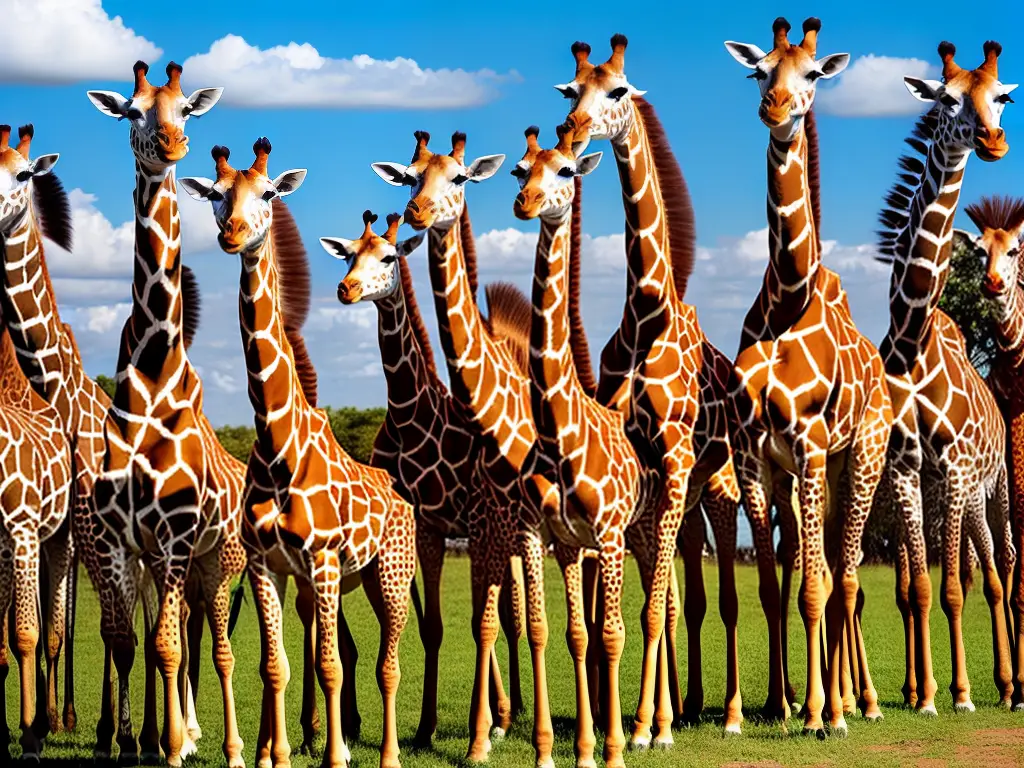
The Giraffe in Art and Culture
Egyptian art often depicted giraffes as symbols of elegance and grace, illustrating their elongated necks and striking patterns. Tomb paintings and petroglyphs dating back to the Old Kingdom showcase these animals browsing on trees or gracefully standing alongside other admired creatures. The Egyptians revered the giraffe and even trained them, together with other exotic animals, for display in processions and zoological gardens. In more recent times, artists like Salvador Dali have continued to incorporate giraffes into their work to address issues of diversity, acceptance, and environmental conservation. Sculptors also often use the giraffe’s distinct features to create modern, abstract representations that challenge our perception of form and proportion.
In African mythology, the giraffe is associated with communication, intuition, and vision, owing to their tall stature and superior vantage point. In various African tribes, the animal plays a significant role in folklore and oral traditions. A popular folktale among the Kamba people of Kenya tells the story of a giraffe who aids a young herder by giving him a magic stick that can turn whatever it touches to gold. Giraffes are also symbolically linked to traits such as gentleness, caution, and resourcefulness in these oral traditions.
Heraldry has long incorporated giraffes into its symbolism and design. Medieval European heraldry, in particular, made use of giraffe emblems to signify high aspirations, a quest for knowledge, and a connection to the divine. Coats of arms featuring giraffes were uncommon but not unheard of, primarily representing noble individuals or institutions with worldly interests or far-flung contact networks. The giraffe’s exotic nature and strong association with Africa also made it a popular emblem for European explorers and traders during the Age of Exploration.
In the visual arts, the giraffe has inspired countless works across different periods and styles. Notably, the Renaissance art embraced the giraffe as a symbol of curiosity and the unknown, seen in works such as Pisanello’s fresco, “The Vision of St. Eustace” (c. 1438–1442), where a gracefully poised giraffe stands amidst other fantastical creatures. In more modern times, artists like Salvador Dali have incorporated giraffes into their surrealist works, using their unusual proportions and features to challenge the viewer’s perception of reality.
The immense popularity of giraffes in the 19th and 20th centuries influenced various forms of art and literature. In children’s literature, beloved characters like Sophie la Girafe and enchanting tales such as Doctor Dolittle by Hugh Lofting emerged, where giraffe characters often embody their symbolic qualities: gracefulness, intelligence, and curiosity. The presence of giraffes in art and literature continues to inspire the human imagination, reminding us of our innate curiosity for the world and its diverse inhabitants.
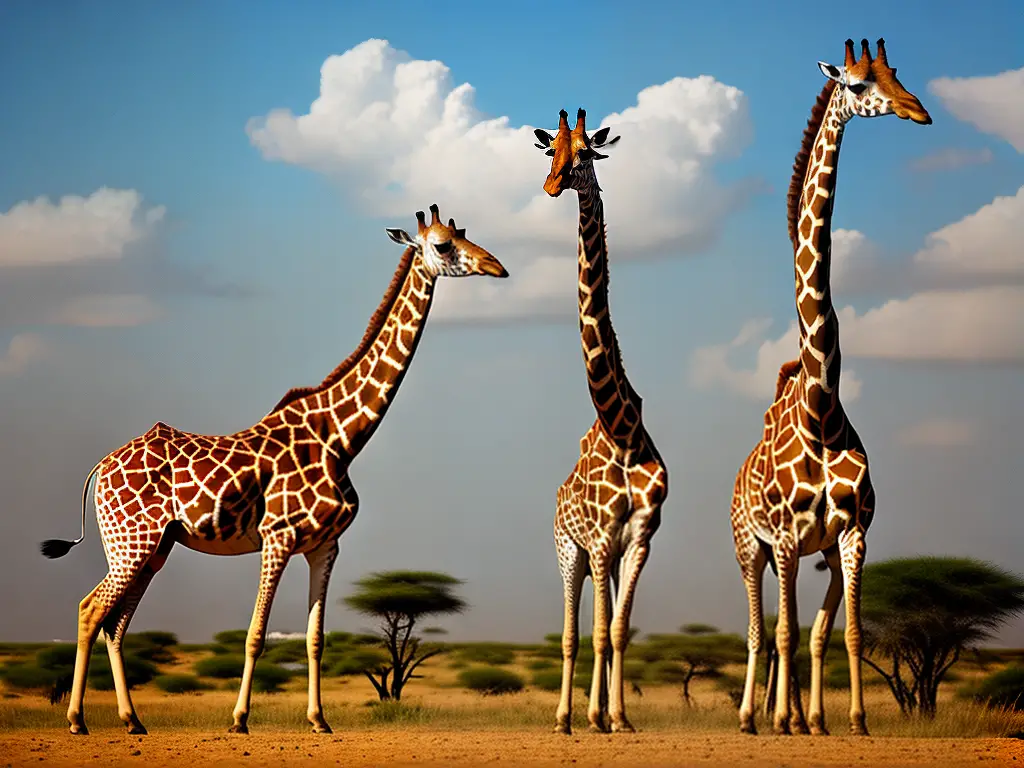
Giraffe-Inspired Art and Architecture
This fascination with giraffes extends beyond literature, even inspiring architectural designs. One noteworthy example is the breathtaking Giraffe Manor in Nairobi, Kenya. This boutique hotel, modeled after a Scottish hunting lodge, allows unique interactions with endangered Rothschild giraffes that have made the manor and its surrounding 12-acre reserve their home. The building’s design pays homage to the graceful creatures with high ceilings, soaring windows, and purpose-built feeding platforms, showcasing the connection between humans and these majestic animals. Through both art and architecture, giraffes continue to capture our hearts and imaginations.
Giraffe-themed playgrounds can also be found worldwide, connecting urban environments with these magnificent mammals, who are beloved by both children and adults. These playgrounds often incorporate physical attributes of the giraffe, such as long necks and towering legs, into the design of the play equipment, enabling children to climb, slide, or swing while being surrounded by the iconic creatures. Integrating giraffe-inspired elements into playground designs promotes imaginative play, encouraging children to learn more about the natural world and the importance of protecting endangered species.
Giraffes have also inspired the architecture and design of several sculptures and monuments across the globe. One such example is the iconic “Giraffe and Baby” statue in front of the Lincoln Children’s Zoo in Nebraska, United States. This impressive, large-scale sculpture features a giraffe with its calf, symbolizing the bond between mother and child, and drawing viewers’ attention to the beauty and majesty of these creatures. Similarly, the giraffe sculptures witnessed in the city of Paris, France, elegantly capture the essence and grace of these animals through their portrayal of tall, slender curves, prompting viewers to appreciate and recognize the artistic potential of the giraffe’s unique form.
In literature, the elegant and peculiar shapes of giraffes have inspired authors to create unique characters and narratives featuring these fascinating creatures. For example, Roald Dahl’s “The Giraffe and the Pelly and Me” is a children’s book that follows the adventures of a group of friends, including a giraffe, while they embark on a quest to improve their livelihoods. The book showcases the remarkable qualities of the giraffe, including its impeccable grace and the versatility of its extraordinarily long neck, and teaches valuable lessons about teamwork, friendship, and perseverance.
Architects’ fascination with giraffes extends to other artistic domains such as visual arts, product design, and literature. For instance, the renowned “Giraffa” lamp series by contemporary designers Pablo Designs showcases minimalist lighting fixtures inspired by the giraffe’s anatomy; featuring elongated necks and adjustable heads that mimic the flexibility of the animal. By merging aesthetics and functionality, this tribute to the graceful and elegant nature of giraffes demonstrates the creative potential that lies within these creatures, highlighting the extensive cultural impact of giraffe-inspired art and literature on modern society.
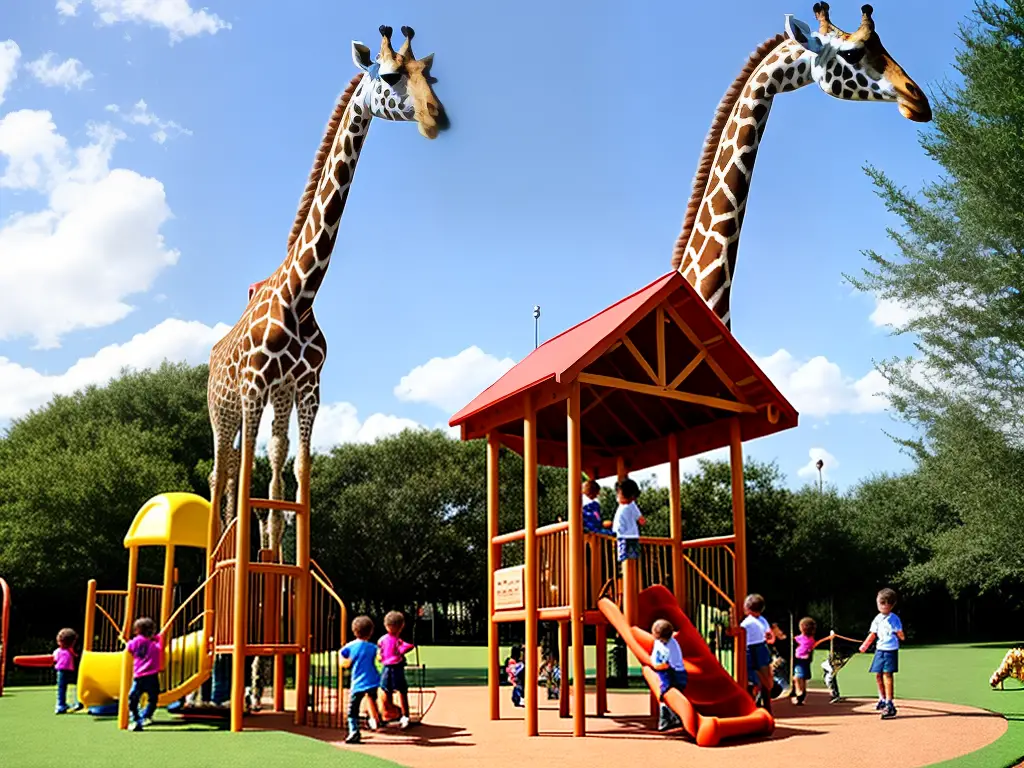
Giraffes in Literature
An example of giraffe-inspired literature is the delightful children’s book The Giraffe That Walked to Paris. The story follows a young giraffe named Belle as she captures the hearts of those who witness her grace and elegance. This captivating tale underscores the significance of giraffes in the world of literature by placing emphasis on their unique qualities and the animal’s extraordinary impact on human lives.
Giraffe by J.M. Ledgard follows the story of a group of giraffes during the Cold War, weaving together the narratives of the giraffes and a handful of human characters whose lives become intertwined with the fate of the majestic creatures. Through this beautifully written novel, Ledgard explores themes of captivity, aspiration, and the search for understanding in the face of an uncertain future. The giraffe serves as a powerful symbol of freedom and grace amidst a turbulent time and place in history.
In A Tower of Giraffes: Poems About Unusual Animal Group Names by Jennifer S. Holland, a poem playfully explores the collective noun for a group of giraffes while showcasing the uniqueness and expressive presence of the animals, thus adding to the richness of giraffe-inspired literature.
Giraffes Can’t Dance tells the story of a giraffe named Gerald who overcomes insecurity to discover his unique dance moves. This heartwarming story of self-acceptance and embracing individuality uses the giraffe as a key narrative element to deliver a powerful and essential message to readers of all ages.
In Zarafa: A Giraffe’s True Story, from Deep in Africa to the Heart of Paris by Michael Allin, we are taken on an extraordinary journey of a giraffe named Zarafa who travels 4,000 miles and captures the hearts of everyone she encounters along the way. The book highlights the unique qualities of a giraffe, such as its elegant grace and captivating presence, which has inspired artists and writers alike to create a diverse range of giraffe-focused art and literature throughout history.
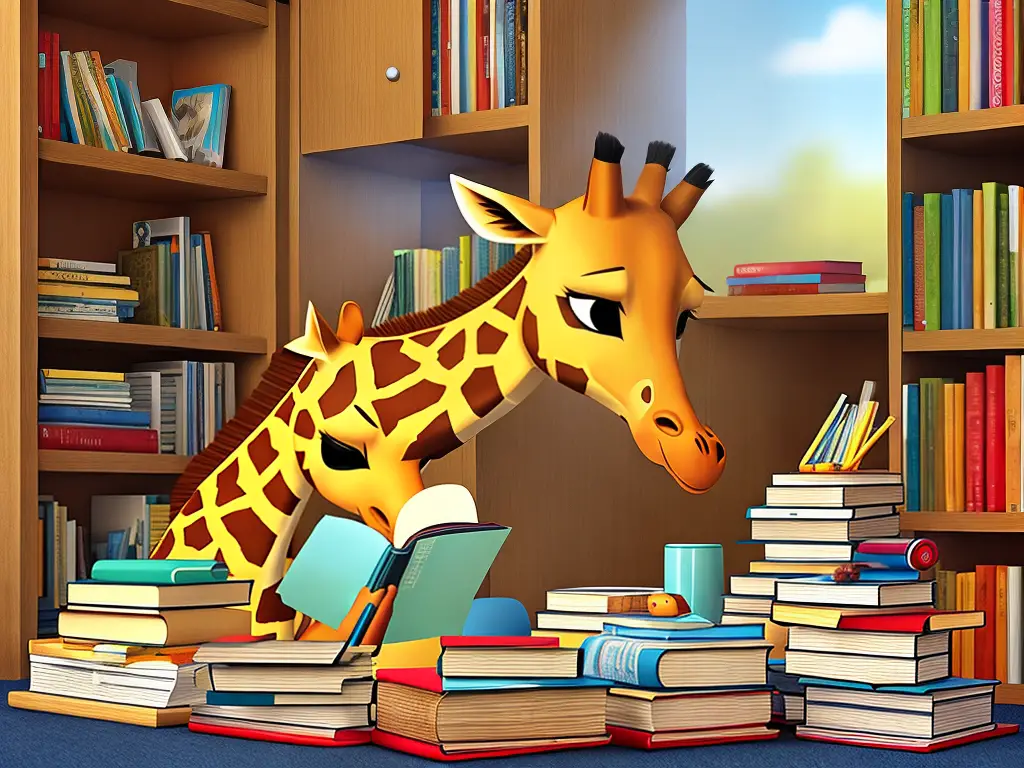
The Power of Art and Literature for Giraffe Conservation
As the tallest mammals on Earth, giraffes have long been considered a source of fascination, leading to countless artistic and literary works being inspired by their majestic presence. In recent years, conservationists have emphasized the critical importance of protecting these gentle giants, whose populations have declined significantly due to habitat loss and other threats. Heightening the awareness about their plight, the profound connections between giraffe-inspired art and literature and the need for greater conservation efforts become even more apparent and vital.
Art and design have emerged as powerful tools to raise awareness about the plight of giraffes in the wild, highlighting their natural beauty and fostering empathy among the public.
One such organization leveraging the potential of art for giraffe conservation is the Giraffe Conservation Foundation (GCF). In collaboration with renowned artists and designers, the GCF has created various pieces that emphasize the beauty and vulnerability of giraffes in the wild. By combining striking visual elements with important information about giraffe populations, these art pieces inspire viewers to learn more about these incredible creatures and support conservation efforts aimed at protecting them.
Artists have also taken it upon themselves to create works that focus on the tribulations faced by giraffes in the wild. An example of this is the stunning and emotive work of artist B. Kliban, known for his illustrations of cats, who has depicted giraffes in danger from shrinking habitats and human encroachment. Another artist, who goes by the name of Bloodhound Omega on DeviantArt, uses the medium of digital art to create captivating images of giraffes and their environments, often highlighting the threats they face.
Beyond visual art, literature can play an influential role in raising awareness for giraffe conservation. Authors such as Guy Belleranti, known for his engaging wildlife stories, have written elegant and informative pieces detailing giraffes and the dangers they face as a species. Belleranti demonstrates that through the power of the written word, readers can gain a deeper understanding of the natural world and its inhabitants, inspiring them to advocate for and defend nature’s most vulnerable creatures, such as the giraffe.
In order to have a profound impact on the fate of giraffes in the wild, it is crucial for artists, authors, and organizations to utilize their talents for conservation and education purposes. These artistic efforts not only allow for the creation of awe-inspiring and thought-provoking works, but they also serve as essential reminders of the collective responsibility humans have to protect and preserve the natural world. By doing so, they contribute to a deeper appreciation for the unique beauty of giraffes and motivate others to join the vital struggle to safeguard these magnificent animals for future generations.
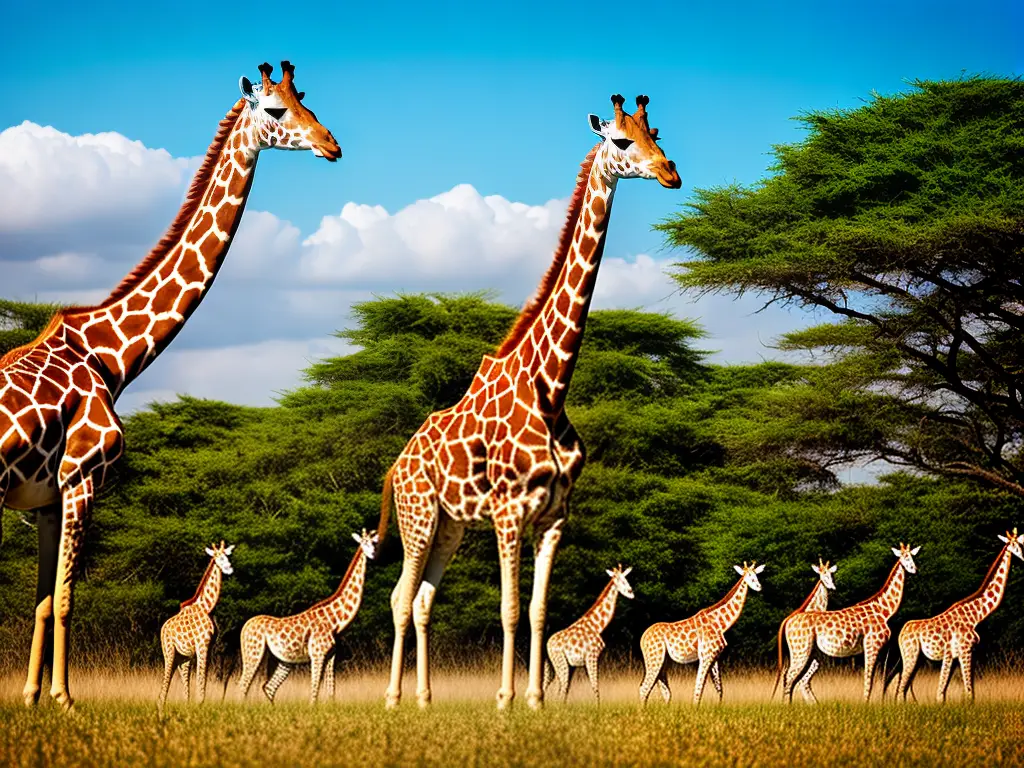
Giraffe-Inspired Art Trends
One effective way to raise awareness and appreciation for giraffes is through the prevalent trend of giraffe-inspired pop art. This artistic movement, which emerged in the mid-20th century, draws inspiration from popular culture and mass media. Artists such as Andy Warhol have popularized this style, which often translates into colorful and quirky depictions of majestic creatures like giraffes. By incorporating bold colors, repeating patterns, and graphic elements that reflect the unique features of giraffes, such as their long necks and distinctive spots, these creations become both playful and impactful. This surge in popularity of giraffe pop art, particularly on social media platforms where easily digestible designs thrive, further helps spread recognition and support for the conservation of these amazing animals.
Abstract art is another area where giraffe-inspired works have made an impact. This style allows artists to explore the essence of the animal rather than creating a realistic representation. By focusing on the shapes, forms, and colors linked to the giraffe, these compositions tap into the emotional and imaginative aspect of the viewer’s experience. For example, some artists use elongated curved lines and amorphous shapes to represent the giraffe’s neck and spots while playing with unusual color combinations to break away from traditional palettes. This creative freedom in abstraction leads to an endless array of possibilities for giraffe-inspired art.
Street art, with its public and often large-scale nature, offers another platform for expressing creativity with giraffe themes. From murals to graffiti, artists have incorporated giraffes into their pieces as symbols of nature, resilience, or whimsy. Some street artists cleverly utilize the unique architecture of buildings, using the height of walls or other structures to visually accentuate the giraffe’s towering figure. Others integrate giraffes into nature-inspired works to convey strong messages about the need for conservation and environmental awareness. These public displays often garner widespread attention and admiration, drawing in enthusiasts and casual viewers alike.
The influence of these trends in giraffe-inspired art is not only limited to the canvas or street walls, but also extends to areas such as home décor, fashion, and product design. As a result, consumers are seeing their favorite animal represented in various forms, from decorative sculptures and wall art to printed textiles and quirky accessories. Designers are increasingly using giraffe motifs as inspiration for creating unique and eye-catching pieces that seamlessly merge art with functionality. For example, fashion houses and brands have embraced giraffe prints or incorporated giraffe-shaped accessories into their collections, offering fresh and unexpected ways to incorporate this beloved animal in daily life.
In literature, giraffe-inspired stories and poems capture the essence of these animals by exploring themes such as grace, curiosity, and the importance of self-acceptance. Titles such as “Giraffes Can't Dance” and “Zeraffa Giraffa” offer uplifting messages for young readers while gently inviting them to appreciate the beauty of these creatures. Additionally, some authors use the giraffe as a symbol of otherness, drawing parallels between the animal’s unique appearance and the challenges faced by those who feel different from their peers. These literary endeavors demonstrate the power and versatility of the giraffe as a muse for creators across various disciplines.
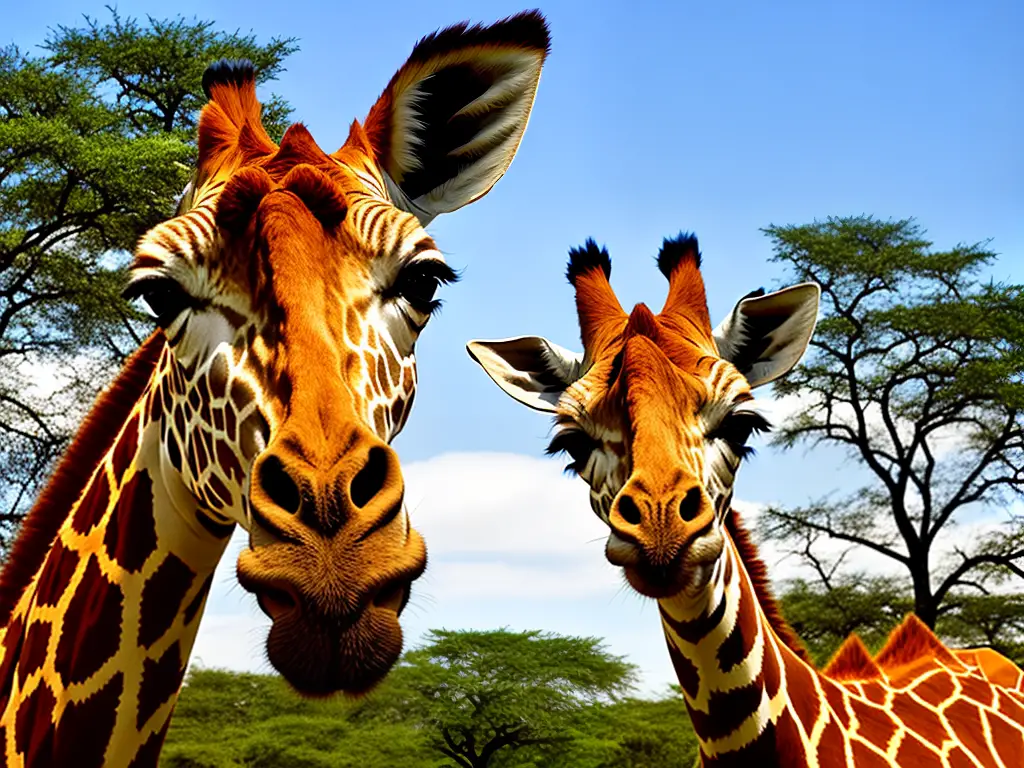
From ancient African art to modern-day urban landscapes, the giraffe has long been a muse for human artistic endeavors. Whether serving as a symbolic figure in folklore, starring in heartwarming children’s stories, or inspiring innovative architecture, giraffes continue to leave a meaningful impact on our creative lives. As we recognize and appreciate the many ways that giraffe-inspired art and literature enrich our cultural tapestry, we also affirm the importance of preserving their populations in the wild, so that these awe-inspiring giants may continue to inspire future generations.